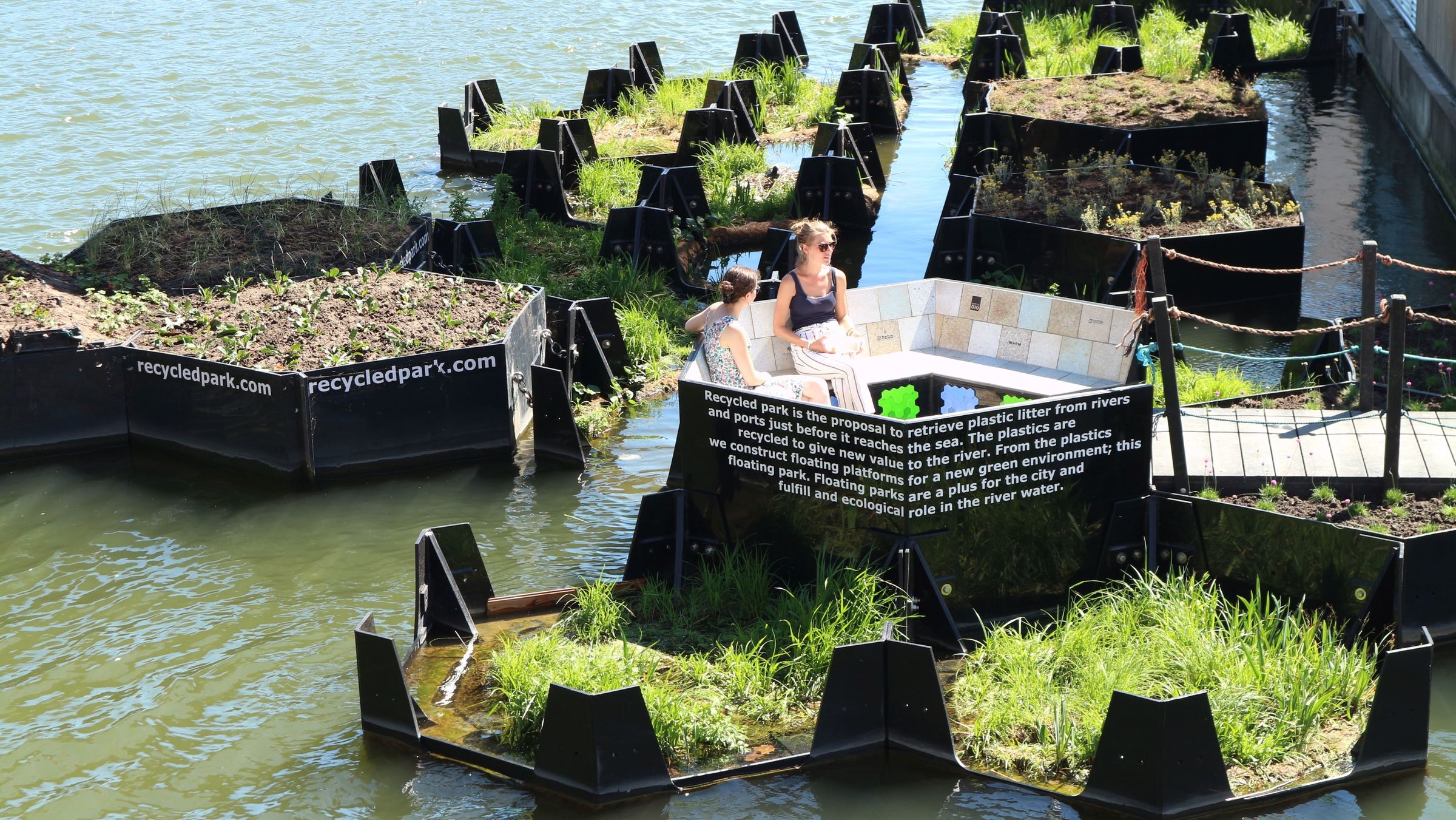In Rotterdam, one project is scooping up plastic from the city’s river and turning it into a floating green park to improve the area’s biodiversity.
We all know plastic has become a problem. Plastics production has increased twentyfold since 1964, reaching 311 million tons in 2014, an amount which is expected to quadruple by 2050, according to a report from the Ellen MacArthur Foundation. By that time, there will be more plastic in the ocean than fish.
Reports show that only around nine per cent of the world’s plastic is ever recycled, meaning the rest ends either somewhere on land or in the sea. The UN estimates that eight million metric tons of plastic waste enter the world’s oceans each year.
There are several existing projects aimed at solving the issue of plastic and microplastics in our oceans. Boyan Slat’s Ocean Cleanup project, for example, that creates inflatable barriers to trap plastic in the water, and the Manta, a litter-collecting boat that can retrieve plastic before it breaks down into microparticles. Other projects are focused on recycling the collected waste. For instance, one fashion brand is creating clothing from plastic recovered from harbours, while others are using plastic waste in 3D printing. One Netherlands-based company is even using it to create street furniture.
Catching plastic in the river before it reaches the ocean
More than 1,000 cubic meters of plastic waste end up in the North Sea every year via the Meuse River, according to a report by the Dutch Ministry of Infrastructure and Environment. But now these pieces of plastic are getting a second life as the building blocks of the Recycled Park, a floating island in Rotterdam’s port of Rijnhaven.
The Recycled Island Foundation, (known as CLEAR RIVERS since 2019) the organisation developing this idea, opened its prototype to the public after years of retrieving and recycling plastic from the river. The plastic has been recycled and repurposed into 28 hexagonal blocks to form the foundation for the floating park, a solution that not only prevents plastic waste from reaching the ocean but transforms it into a useful agent for biodiversity.
The park serves as a recreational area where locals can visit for lunch or relaxtion, and it can also be used as a stage for events. Not only that, but the park also provides a new habitat for aquatic flora and fauna. Vegetation (even trees) can be grown on the top of the blocks as their roots intermesh under the water. Animals such as birds and fish can find food, shelter or a breeding ground there, and are able to lay their eggs below the platforms.
Wait though, doesn’t plastic in water break down into microplastics? According to the Recycled Island Foundation, they already thought about that possibility when designing the project, and to counteract it they’ve ensured that, as well as being durably built, the recycled plastic used in the islands contains a special UV blocker that should protect it against the affects of the sun. Regular monitoring of the islands will also be carried out to ensure that no plastic particles are leaching back into the water.
How is the plastic recovered?
Expansion is already planned to create more recycled plastic parks worldwide, but the project started in the Meuse River because of the viability of the plastic in this zone. Not only is it newer than in other places, but most of it also floats in the first metre below the river’s surface. Because there aren’t any strong waves, that makes the plastic easier to collect with nets and reuse.
The collected plastic goes to Wageningen University, one of the leading research centers on recycling techniques, for analysis and sorting. Another partner, Hebo Maritiemservice, cleans the plastic and turns it into the hexagonal blocks. Hebo Maritiemservice also helped to develop the Litter Traps, nets used to capture and contain floating litter. According to the Recycled Island Foundation website, these traps can be implemented in ports, rivers and river mouths worldwide.
The foundation is already planning to install collecting basins in Brussels, at the Charleroi Canal, and on the island of Ambon in Indonesia.
The Recycled Park offers a potentially scalable solution to plastic waste in our rivers and creates new green spaces for biodiversity and human pleasure. Still, we should prioritise preventing this plastic from ending up in nature in the first place. We can all contribute to keeping our oceans safe, not only by recycling but also by reducing our plastic consumption.
Update October 2020: In 2019 the Recycled Island Foundation registered and launched the new brand name CLEAR RIVERS.






